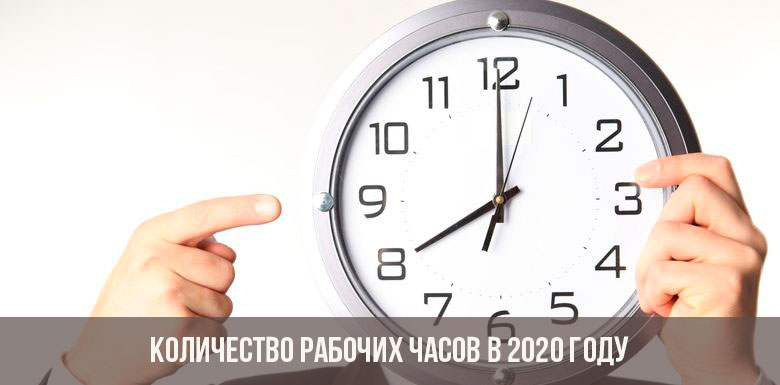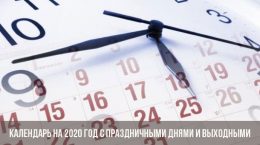Content [Hide]
The production calendar is compiled annually and contains comprehensive information on holidays, shortened and working days, as well as monthly, quarterly, semi-annual and annual working hours for 24, 36 and 40-hour working weeks. The number of working days in 2020 will be 248 days or 1979 hours, and days off - 118 (subject to the “five-day” work). For convenience, special tables have been created that contain detailed data on when the Russians will work in 2020, and when to relax.
The legislative framework
Tables 1, 2 and 3 are compiled in accordance with the approved Production calendar and taking into account holidays and weekends according to:
- Art. 112 of the Labor Code of the Russian Federation (as amended on December 27, 2018);
- Order of the Ministry of Health and Social Development of the Russian Federation No. 558- “n” of 08/13/2009

Note! The Government of the Russian Federation has already approved the normative act “On the postponement of days off in 2020”, although earlier this document was usually approved in the month of October.
In the legislation of the Russian Federation the concept of “production calendar” is absent: therefore, “at home” among accountants, human resources and employees of organizations adopted such names of this document as “time sheet”, “labor calendar” or “work calendar”. The names given are synonyms.
Number of working days
In 2020, 1 working day more than in 2019, i.e. 366 calendar days, and the same number of days off. And all because 2020 is a leap year (29 days in February). Total in 2020 will be:
- 248 working days;
- 118 days off.
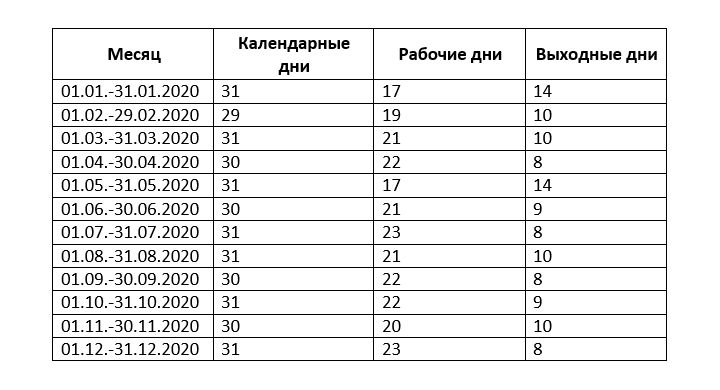
The number of working days by month in 2020
Working hours
The specific number of working hours established for citizens working on a 24-hour, 36-hour or 24-hour week is calculated annually on the basis of information about official holidays adopted by the Government of the Russian Federation, as well as upon the fact that the Government approved the normative act “On the transfer of days off ... ”taking into account the shortened days in each reporting period (calendar month). Thanks to these standards, you can find out exactly how many different categories of employees will have to work in 2020.
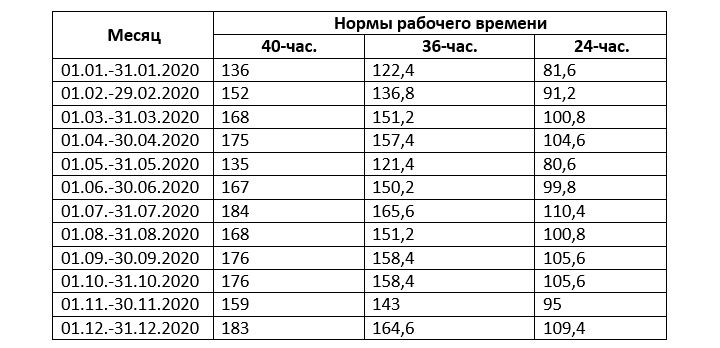
The number of working hours by months in 2020
Public holidays
Table 3 is based on the requirements of Art. 112 of the Labor Code and contains consolidated information about the official state. holidays that are celebrated at the same time every year.
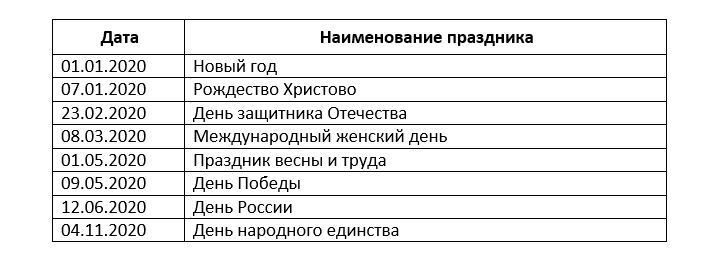
Public holidays in 2020
Holidays transfer
Holidays that coincide with the calendar weekend (i.e. fall on a Saturday or Sunday) and are officially non-working, as required by the Labor Code of the Russian Federation, must be rescheduled to the next working day. Other transfer options are officially approved by the relevant document.
In 2020, the Government of the Russian Federation approved the following transfers:
- from January 4 (Sat) to 05/04/2020 (Mon):
- from January 5 (Sun) to 05/05/2020 (Tue);
- from February 23 (Sun) to 02.24.2020 (Mon);
- from March 08 (Sun) to 02/09/2020 (Mon);
- from May 9 (Sat) to 05/11/2020 (Mon).

Long weekend
Due to the presence of official non-working days and the transfer of certain holidays to later dates, in 2020 there will be, as always, several periods of “protracted” holidays. Table 4 provides information on the longest holidays of 2020, taking into account the forecast data on the transfer of holidays.

Long weekend in 2020
National Unity Day, which will take place on November 4 (Wednesday), will be celebrated in the middle of the week: the celebration will last only a day.
Shortened days
According to Part 1 of Art. 95 of the Labor Code of the Russian Federation on the day preceding the official holiday, the working time must necessarily decrease by exactly 1 hour. Moreover, Art. 95 of the Labor Code of the Russian Federation does not provide for an hourly reduction in slave labor Friday time, which precedes the onset of state. Sunday holiday.
In 2020 (in the case of a five-day working week), the length of the day by 1 hour will be reduced on the following dates:
- 04.2020 (Th);
- 05.2020 (Fri);
- 06.2020 (Th);
- 11.2020 (watts);
- 12.2020 (Th).
For the convenience of readers, all of the above information is combined in table No. 5.
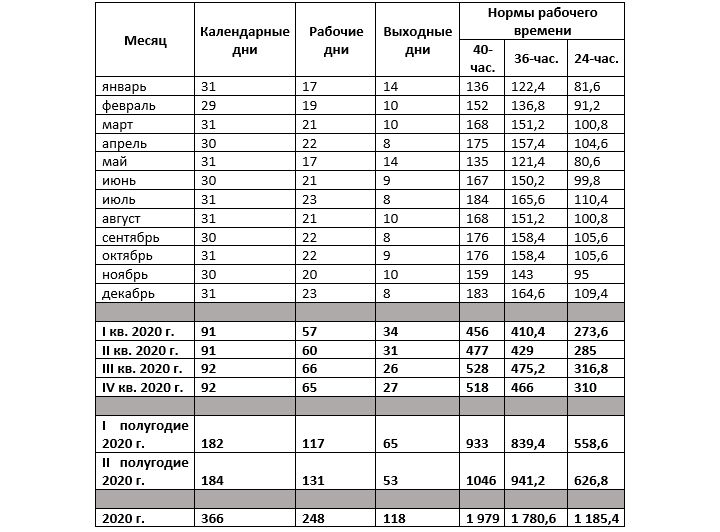
Number of working days and rates time for 2020
Read also:

